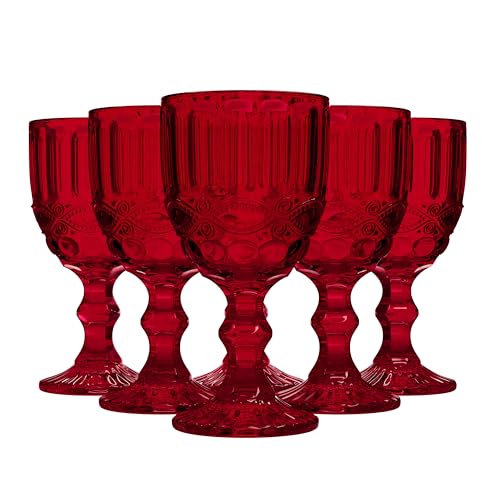

If you are concerned about gluten in your beverages, you can confidently enjoy these lighter varietals. The fermentation process of grapes does not involve any gluten-containing grains, making them a safe choice for those with gluten sensitivities or celiac disease.
It’s essential to be aware that cross-contamination can occur during the production process. While the base ingredients do not contain gluten, some wineries may use fining agents or other additives that could introduce gluten into the final product. Always check labels or consult with the producer to ensure a safe selection.
When selecting a bottle, opt for brands that are transparent about their production methods. Many producers will proudly label their offerings as gluten-free, providing additional peace of mind. Remember, your palate and health should always come first in your tasting journey.
Understanding the Gluten Content in Certain Beverages
For those who need to avoid gluten, it’s crucial to know that most fermented beverages made from grapes, including the lighter varieties, are typically safe. The fermentation process eliminates gluten proteins, making them suitable for individuals with gluten sensitivity or celiac disease.
Key Points to Consider
- Grapes themselves contain no gluten.
- Fermentation does not introduce gluten into the final product.
- Cross-contamination can occur in facilities that also process gluten-containing products, so always check labels or inquire with producers.
Pairing and Enjoying
When pairing these drinks with food, consider options like how to cook flour tortillas in a skillet. This method allows for delicious, gluten-free options that complement your favorite fermented beverages.
Understanding Gluten and Its Sources
Gluten is a protein found primarily in certain grains, specifically wheat, barley, and rye. Those sensitive to gluten must avoid these grains and products derived from them, as they can trigger adverse reactions. Notably, oats are often contaminated by gluten during processing unless labeled gluten-free.
In addition to obvious sources such as bread, pasta, and cereals, gluten can be present in less expected items like sauces, dressings, and certain processed foods. It’s crucial to scrutinize labels and ingredient lists, as gluten can be used as a stabilizing agent or thickener.
For individuals with celiac disease or gluten intolerance, cross-contamination poses a significant risk. Even small traces can provoke symptoms. It’s advisable to choose certified gluten-free products to ensure safety.
When exploring beverages, many distilled spirits are gluten-free, while others may not be. Always check product specifications if you are uncertain about a particular drink.
Understanding where gluten may appear and recognizing safe alternatives allows individuals to make informed choices and maintain their health effectively.
How White Wine is Made: Ingredients Breakdown
The primary component in crafting this beverage is grapes, predominantly varieties such as Chardonnay, Sauvignon Blanc, and Pinot Grigio. The selection of grapes significantly influences the final flavor profile. Each grape type brings unique characteristics, ranging from fruity to floral notes.
Fermentation starts after crushing the grapes to extract juice. Yeast is then added to initiate the fermentation process, converting sugars in the juice into alcohol and carbon dioxide. The choice of yeast can also affect the taste, with different strains contributing to various aromatic compounds.
Clarification follows fermentation. This step is essential for achieving a clear product. Techniques like fining, which involves adding agents to bind with suspended particles, or filtration, help remove impurities. This process results in a visually appealing and palatable drink.
Aging is another critical phase. Some varieties benefit from oak barrels, which impart flavors like vanilla and spice, while others are best enjoyed fresh. The duration of aging varies based on the desired outcome and grape type. Aging in stainless steel tanks maintains a crisp profile, highlighting the grape’s natural qualities.
Before bottling, a final adjustment phase occurs, where winemakers may blend different batches to achieve a balanced flavor. This blending process allows for consistency in taste across bottles, ensuring that each release meets quality standards.
Common Misconceptions About Vino and Gluten
Many individuals mistakenly believe that all fermented beverages contain traces of this protein. In reality, traditional methods of crafting these drinks typically involve only grapes and yeast, with no inclusion of grains that might introduce problematic elements.
Another frequent misbelief is that cross-contamination during production can occur. While this is a concern in some contexts, reputable producers ensure that their facilities are free from gluten sources, particularly when they cater to consumers with dietary restrictions.
Some enthusiasts think that specific varietals inherently possess gluten. This is unfounded, as the fermentation process does not involve any components containing this protein. The perception often arises from miscommunication about certain food pairings or the environments in which these beverages are enjoyed.
Lastly, there is a notion that sparkling options contain gluten due to the presence of added ingredients for carbonation. Most reputable sparkling producers utilize natural fermentation processes, negating any gluten concerns.
Testing for Gluten Presence in Vino
For those concerned about potential gluten contamination in fermented beverages, specific testing methods can provide clarity. One effective approach is utilizing enzyme-linked immunosorbent assays (ELISA), which are designed to detect gluten proteins even in trace amounts. These tests are sensitive and can identify levels as low as 5 parts per million, making them reliable for individuals with gluten sensitivities.
Another option includes polymerase chain reaction (PCR) testing, which analyzes the genetic material of grains. This method can differentiate between gluten-containing grains and those that are safe, enhancing accuracy in identifying any cross-contamination.
When considering a bottle, it may be beneficial to check for labels indicating gluten-free status. However, not all producers test their products, so reaching out directly to wineries for information on their production processes can also yield valuable insights.
Lastly, home testing kits are available for those who prefer to conduct assessments themselves. These kits allow consumers to test their selections for gluten presence before consumption, providing an additional layer of safety.
Choosing Gluten-Free Wines: What to Look For
Focus on labels indicating “gluten-free” or “certified gluten-free”. This ensures the product is safe for individuals with sensitivities. Seek varietals that are made from grapes without any additives derived from gluten-containing grains.
Pay attention to the production methods. Wines that undergo traditional fermentation using only grapes, yeast, and minimal sulfites are less likely to contain any gluten. Avoid those that include additives or fining agents that may originate from gluten sources.
| Wine Type | Gluten Risk | Recommendation |
|---|---|---|
| Unfiltered wines | Higher | Opt for filtered options |
| Organic wines | Lower | Look for certifications |
| Natural wines | Variable | Research specific producers |
| Commercial brands | Moderate | Check labels carefully |
Research producers known for their commitment to gluten-free practices. Their transparency about ingredients and processes is key.
Consider the region of production. Some areas have stricter regulations regarding additives in vinification, which can influence gluten presence.
Lastly, trust your palate. If a particular bottle causes discomfort, it’s best to avoid it in the future. Always listen to your body’s response to different selections.
Health Implications for Gluten Sensitivity and Wine
Individuals with gluten sensitivity should be cautious about their beverage choices. While many fermented drinks are naturally free from gluten, cross-contamination during production can pose risks. For those affected, it’s crucial to select products specifically labeled as gluten-free to ensure safety.
Symptoms of gluten intolerance can vary significantly, including gastrointestinal distress, fatigue, and neurological issues. Consumption of products that might contain gluten can lead to adverse reactions. Therefore, it’s advisable to focus on trusted brands that adhere to stringent gluten-free practices.
Research indicates that most fermented beverages, including those made from grapes, do not contain gluten. However, it’s imperative to verify the production methods and check for any additives or fining agents that could introduce gluten. Always consult with producers or refer to detailed labels to ascertain the absence of gluten.
If you’re uncertain, consider discussing your dietary needs with a healthcare provider or a knowledgeable wine professional. This can help you navigate choices and avoid potential health complications. Remember, prioritizing your well-being is paramount.
In summary, while many options are available for those with gluten sensitivities, due diligence is essential to maintain a safe and enjoyable drinking experience. Focus on certified gluten-free selections to enjoy your beverages without concern.








